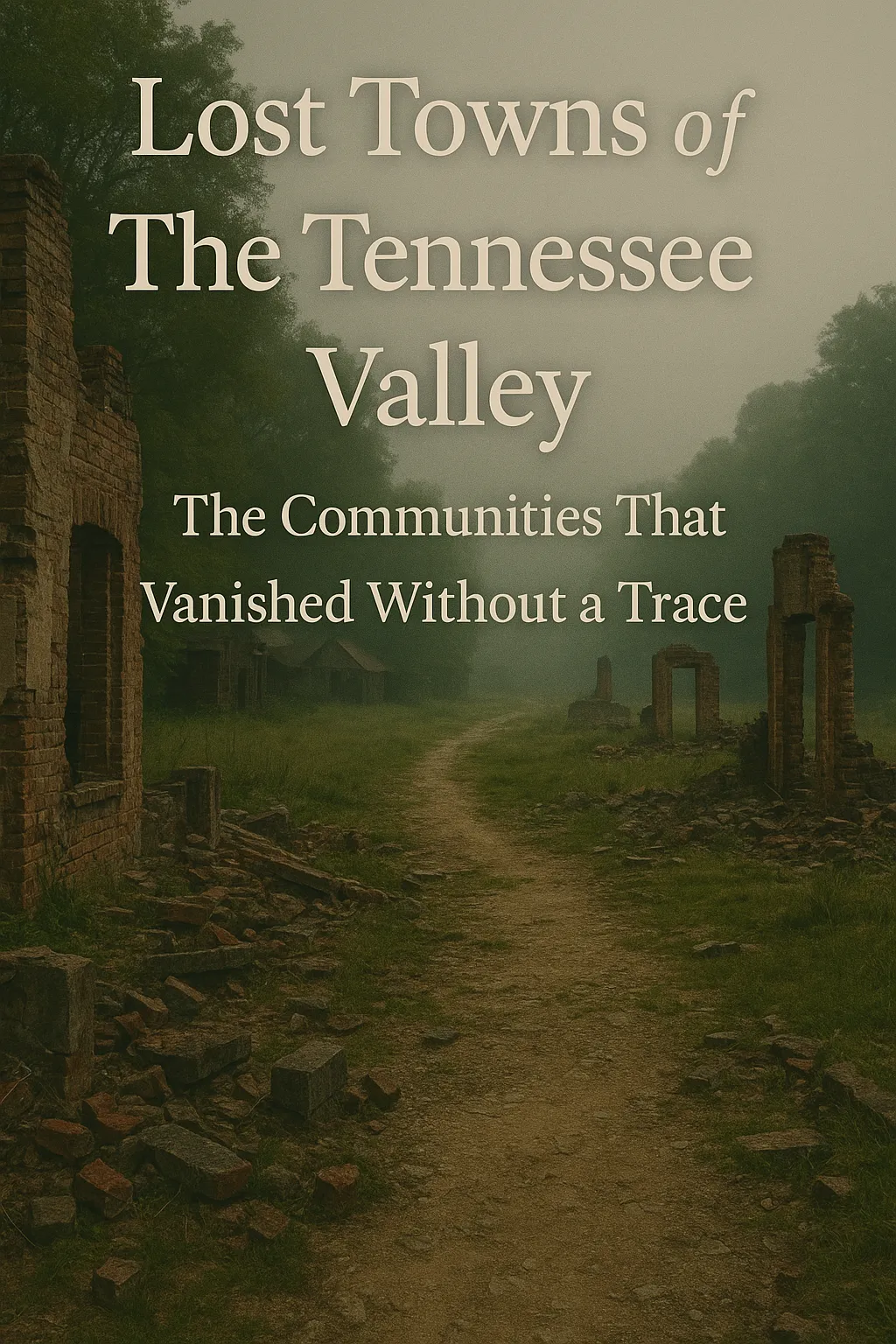
Lost Towns of the Tennessee Valley: The Communities That Vanished Without a Trace
Lost Towns of the Tennessee Valley: The Communities That Vanished Without a Trace
Introduction
The Tennessee Valley, known for its picturesque landscapes and rich history, holds more than just breathtaking views—it harbors the forgotten stories of lost towns that once thrived but mysteriously vanished. Some disappeared due to natural disasters, economic shifts, or the changing course of history, while others simply faded away, leaving no trace behind. The stories of these towns are woven into the very fabric of the region, filled with unanswered questions and the ghosts of forgotten lives. Why did these communities disappear? And what remains of the places where they once stood?
In this blog, we’ll take you on a journey through the lost towns of the Tennessee Valley, uncovering their histories, the reasons for their disappearance, and the eerie remnants that remain hidden in plain sight.
The Rise and Fall of Lost Towns
The Tennessee Valley was once home to vibrant communities that contributed to the region's culture and economy. Towns like Waldens Ridge, Pineville, and New Hope were once bustling with residents, businesses, and schools. But today, few people know their names, and even fewer know where they once stood. These lost towns were often erased from maps, swallowed up by time, nature, or human intervention.
The Disappearance of Pineville
One of the most famous lost towns in the Tennessee Valley is Pineville, a small community that thrived in the 1800s. Located near the banks of the Tennessee River, Pineville was once a major port for riverboats transporting goods up and down the river. However, in the early 1900s, the construction of the Tennessee Valley Authority (TVA) dams flooded the area, submerging the town and its people’s memories under the waters of the river. Today, only faint outlines of its existence remain beneath the surface, a reminder of a once-bustling hub now lost to history.
Waldens Ridge: A Forgotten Haven
Waldens Ridge, a community that flourished in the late 19th century, met its demise when it was bypassed by the expansion of railroads and highways. Once a thriving settlement known for its fertile land and natural resources, Waldens Ridge fell into obscurity as newer towns rose to prominence in the 20th century. Today, only a handful of abandoned buildings and forgotten cemeteries remain as silent witnesses to a town that time left behind.
Theories Behind the Disappearances
While some towns vanished due to natural causes, others simply fell victim to the changing tides of industry and modernization. Here are some of the theories that attempt to explain the disappearance of these once-thriving communities:
Economic Shifts and the Rise of New Towns
Many of the lost towns of the Tennessee Valley were affected by economic changes, such as the decline of riverboat transportation, the rise of railroads, and the development of new infrastructure. As new technologies and trade routes emerged, older towns were often abandoned in favor of more strategically located communities. This economic shift caused many towns to become obsolete, and without new investment or population growth, they eventually faded away.
Natural Disasters and the Impact of the TVA
The construction of the Tennessee Valley Authority (TVA) dams in the 1930s and 1940s caused a significant number of towns to disappear. As the TVA flooded large sections of the Tennessee River Valley to create reservoirs, entire communities were submerged, including the aforementioned Pineville. These forced relocations displaced hundreds of families, and once the waters rose, the towns were lost beneath the surface, their histories forever hidden from sight.
Abandonment and Fading Memories
In some cases, the towns simply faded away as residents moved to nearby cities in search of better opportunities. As the population dwindled, businesses closed, schools were abandoned, and homes were left to deteriorate. Over time, these towns became little more than a memory, with only a handful of long-forgotten landmarks to mark their existence.
The Ghosts of Lost Towns: Eerie Remnants and Haunting Stories
While the physical remnants of many lost towns have disappeared, the stories of their residents and the mysteries surrounding their disappearance continue to capture the imagination. Some believe that the ghosts of former residents still haunt the land where their towns once stood. Visitors to the areas where these lost towns were located report strange occurrences, such as unexplained lights, whispers in the wind, and the eerie feeling of being watched.
For example, visitors to the area near the submerged town of Pineville have reported strange disturbances while boating in the reservoir. Some claim to hear voices coming from the depths of the water, as though the spirits of those who were forced to leave are still calling out to the living. Similarly, in the woods surrounding the abandoned Waldens Ridge, hikers have heard footsteps following them, only to turn around and find no one there.
The Top 5 Lost Towns of the Tennessee Valley
Pineville – Submerged by TVA damming, now hidden beneath the waters of the Tennessee River.
Waldens Ridge – Abandoned after being bypassed by railroads and new towns.
New Hope – A bustling town that was gradually replaced by larger communities and railroads.
Big Spring – A small farming community displaced by the construction of modern infrastructure.
Jenkinsville – Once a mining town, now a ghost town forgotten by time.
Conclusion: The Forgotten Communities of the Tennessee Valley
The lost towns of the Tennessee Valley are more than just abandoned places—they are the echoes of the past, a reminder of the transient nature of human settlements and the forces of nature and industry that shape our world. Whether submerged beneath the waters or swallowed by time, these forgotten communities continue to intrigue and captivate the imaginations of those who seek to uncover their stories.
If you're intrigued by the mysteries of the Tennessee Valley’s lost towns, consider taking a trip to explore the remnants of these communities. Who knows what hidden treasures—or ghostly encounters—await in the forgotten corners of this historic region?
